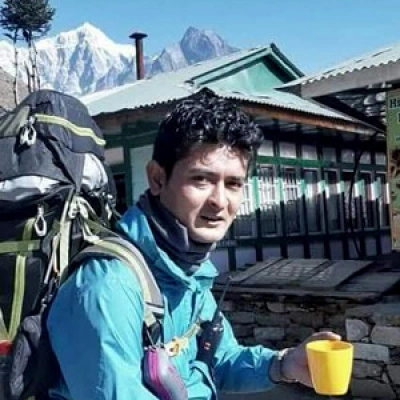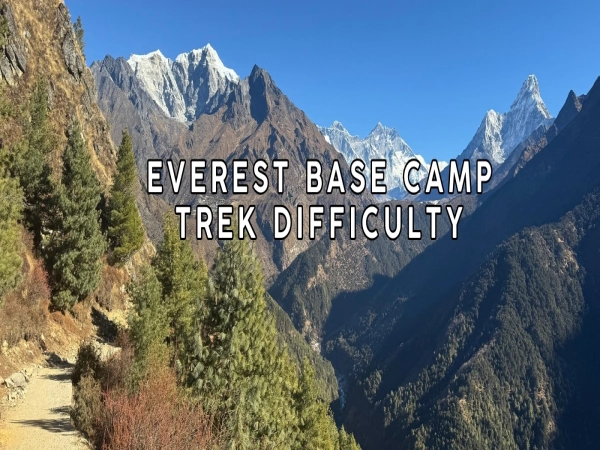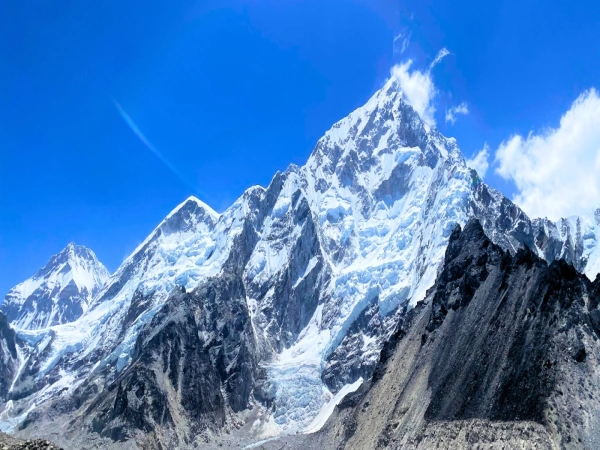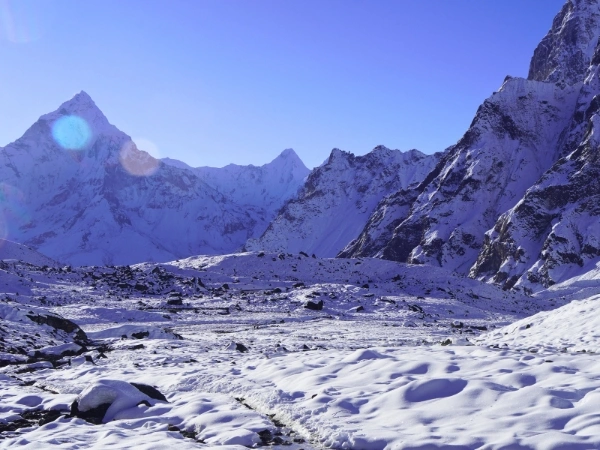Upper Mustang is one of Nepal's most diversified and strikingly beautiful places, located in the humid shadow of the Dhaulagiri range. This beautiful region, a thumb rising up onto the Tibetan plateau, is characterized by sculpted canyons and amazing rock formations, as well as traditional, white-washed Tibetan-style towns, crumbling fortifications, royal palaces, unexplored cave systems, Tibetan Buddhist temples, and Himalayan snow-peaks.
Sacred Caves and Monasteries | Spiritual Encounters in Upper Mustang Trek
Upper Mustang Trekking has quickly become a Himalayan classic. The hike is secluded and restricted, allowing adventurers to see centuries-old caves, pristine civilization, and revered Tibetan Buddhist temples. Locals in this region have little contact with the rest of the world, including Nepalese living in cities, therefore they've effectively kept their rich and wealthy landmarks of culture and traditions hidden. Upper Mustang trek was first permitted two decades ago, and the area remains a restricted trekking region that requires a special permit for walking even today. Upper Mustang is an actual gallery of traditional Tibetan Buddhism, civilization, way of life, and diverse history. Upper Mustang is one of the most isolated locations in the world due to its relative seclusion from the outside world, with most of the inhabitants still speaking traditional Tibetan dialects.
The gorgeous 15 -days Upper Mustang Trek takes you into an area that was formerly part of the Tibetan kingdom and exhibits striking similarities to Tibetan landscapes. Tibetan Buddhism is practiced in its purest form. Upper Mustang is well-known for the discovery of centuries-old caves, culture, and ancient medieval monasteries. Tibetan-style villages are erected, and dwellings are painted white with firewood heaped on the roofs. Tiji Festival, held in Lo Manthang for three days, is one of the key draws for travelers interested in witnessing Upper Mustang's natural civilization.
Upper Mustang's Buddhist Caves provide an exceptional trekking excursion through a remote part of Nepal well off the main road. The upper Mustang trek leads you deep into the world of sky-caves,' including the legendary Luri Gompa and Tashi Kabum, which are painted with some of the most stunning artworks of the Tibetan Buddhist world and date back to antiquity. These Upper Mustang caves, ornamented with Tibetan Buddhist murals occasionally contain exposed human skeletons or weatherworn Tibetan inscriptions on ancient parchments secured in place by sculpted and worn wooden coverings, concealing mysteries from years ago.
Caves in the vicinity of Lo Manthang, Upper Mustang, have a rich tribal history that is connected with the inhabitants of the area in general. Aside from the glittering sceneries, enticing mountains, and sublime remoteness, the presence of over ten thousand caverns lends a wonderful aura to the Mustang region. We can see the multi-story heavenly caverns in the rocks 30 meters above, showing a primitive era of the human species. diverse caverns were utilized for various purposes in the past; people used to transfer refugees into caves, some of them were used as vaults for valuables, and so on. Stupas have been built inside several of the caverns, such as Luri and Tashi Kabum. There are also other funeral caves in various locations of Upper Mustang. The Chokhopani funeral caverns, located on the northern outskirts of Chokhopani Khola, included ceramics, skeletons, beads of various sizes, ornamental jewelry, and so on. Furthermore, Bon rituals might be witnessed in the strange caverns surrounding Upper Mustang.
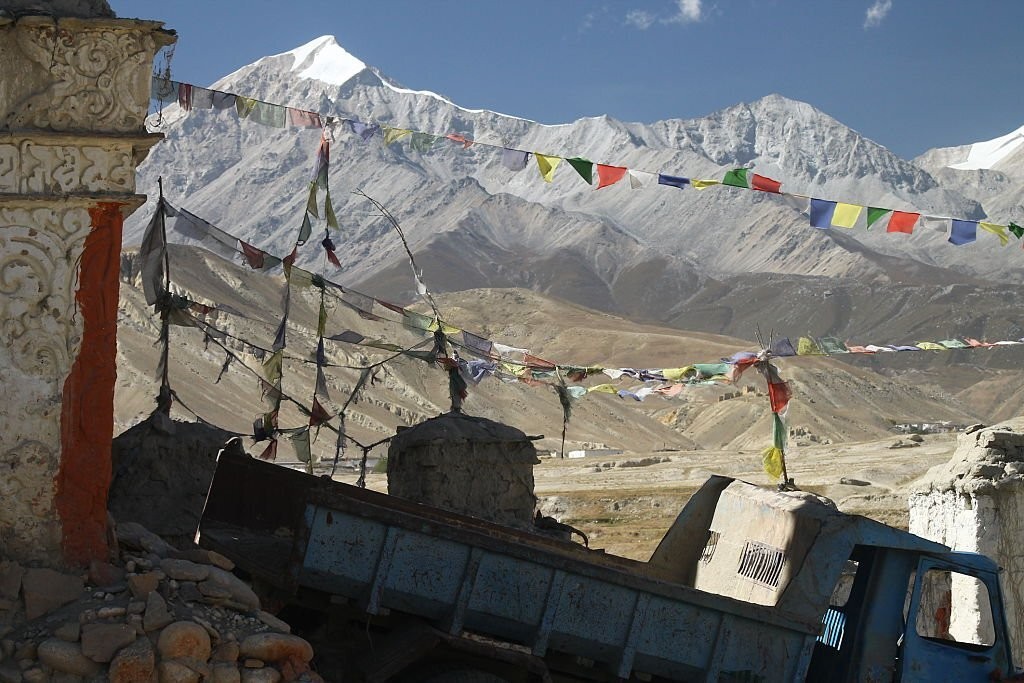
Upper Mustang is well-known for its historical arts, Buddhist culture, and unspoiled Tibetan history. In this area, there are numerous Chortens, Mani walls, Stupas, and monasteries. Guru Rinpoche "Padmasambhava" visited the upper Mustang in the eighth century and meditated at Ranchung cave before establishing ghar gumba in Lo Ghekar to worship Buddhism in the Himalayas. Following that, many monasteries, cave gumbas, stupas, and chortens were built in Nepal's upper Mustang region by the king, locals, and disciple monks. Most of the communities in upper Mustang Nepal now have more than 18 historic monasteries. Among these monasteries are Niphu Gompa, Garphu Gompa, Luri Gompa, Ghar Gompa, Tsarang Monastery, Thubchen Gompa, Jampa Lhakang Chode Gompa, and Namgyal Gompa. These Mustang monasteries serve an important role in preserving Mustang's culture and traditions.
Upper Mustang's monasteries are the region's true showpiece. The majority of these ancient monasteries have been unaffected by modern life and modernization. These are some of the best-preserved examples of historic Tibetan monastic architecture. Several monuments, such as Ghami's Mani wall (305m long), Khorok Chorten, Dakmar, and Ghar Gompa of Lo Gekar in Upper Mustang, have preserved Padmasambhav's mythical heritage. The monastery's collection of old Buddhist scriptures and other artifacts is amazing. Scholars and researchers flock here to acquire knowledge about Buddhism, meditative practices, inner peace, and tranquility. Visitors can observe the rich cultural legacy and daily routines of the monks.
Upper Mustang monasteries not only provide an insight into the rich history of Upper Mustang but also a tranquil and serene atmosphere for meditation and inner peace. The Upper Mustang's people and lifestyle are influenced by Tibetan traditions and customs. Upper Mustang trek is one of the Himalayas' most magical trek that takes you through spiritualism and helps you in finding inner peace so explore it whenever you can.
